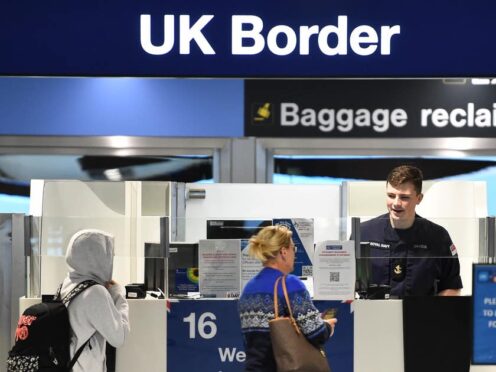Millions of people in the UK with physical immigration documents are being invited to switch to an eVisa as the Government aims for a fully digital immigration and border system by 2025, the Home Office has said.
From Wednesday April 17, individuals in the UK with physical immigration documents will receive an email from the Home Office, inviting them to create a UK visas and immigration (UKVI) account to access their eVisa.
The rollout of digital status is the next stage in the Government’s plan to digitalise the immigration system.
Physical documents will be gradually phased out and nearly all visa holders living in the UK will have access to an eVisa by 2025, the Home Office has said.
Tom Pursglove, the minister for legal migration and the border, said replacing physical documents, called biometric residence permits, with a digital system “will ensure firm control over who comes here to live, work or study”.
Mr Pursglove added: “We’ve already taken really significant steps to digitally transform the border and immigration system, and this wider rollout of eVisas is a key part of that process.
“Replacing physical immigration documents with eVisas will ensure firm control over who comes here to live, work or study, strengthening border security and preventing abuse of the immigration system, while delivering cost-savings for UK taxpayers.”

The Government hopes the introduction of eVisas will reduce the risk of fraud, loss and abuse of physical documents and strengthen border security.
Those who inspect immigration status will be able to conduct one check using an online service and visa customers will be able to access their digital status anywhere and in real time.
An eVisa is linked with the holder’s biometric information to protect against identity fraud.
Invitations will initially be issued in phases.
The process will open to anyone in the UK who holds physical immigration documents in summer 2024.
Customers will be able to create a free UKVI account to access their eVisa.
Creating an account will not change, impact or remove their current immigration status or their rights in the UK.
